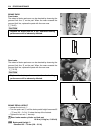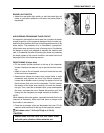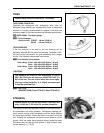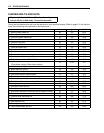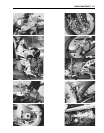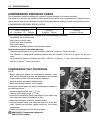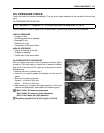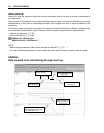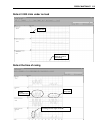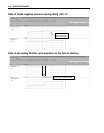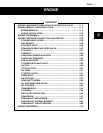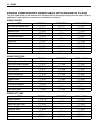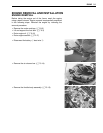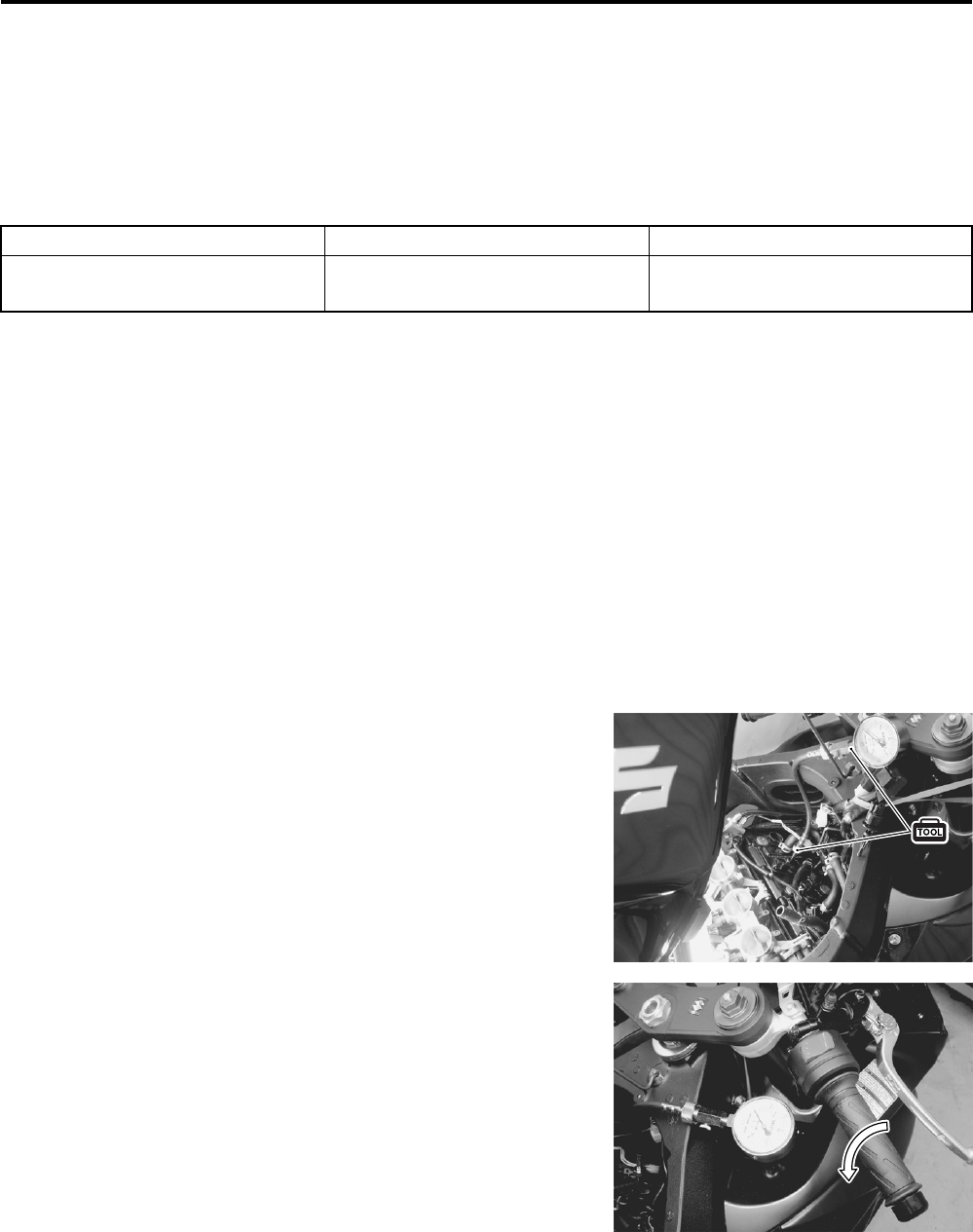
2-32 PERIODIC MAINTENANCE
COMPRESSION PRESSURE CHECK
The compression pressure reading of a cylinder is a good indicator of its internal condition.
The decision to overhaul the cylinder is often based on the results of a compression test. Periodic mainte-
nance records kept at your dealership should include compression readings for each maintenance service.
COMPRESSION PRESSURE SPECIFICATION
Low compression pressure can indicate any of the following conditions:
* Excessively worn cylinder walls
* Worn piston or piston rings
* Piston rings stuck in grooves
* Poor valve seating
* Ruptured or otherwise defective cylinder head gasket
Overhaul the engine in the following cases:
* Compression pressure in one of the cylinders is 900 kPa (9 kgf/cm
2
, 128 psi) and less.
* The difference in compression pressure between any two cylinders is 200 kPa (2 kgf/cm
2
, 28 psi) and
more.
* All compression pressure readings are below 1 200 kPa (12 kgf/cm
2
, 171 psi) even when they measure
900 kPa (9 kgf/cm
2
, 128 psi) and more.
COMPRESSION TEST PROCEDURE
NOTE:
* Before testing the engine for compression pressure, make
sure that the cylinder head nuts are tightened to the specified
torque values and the valves are properly adjusted.
* Have the engine warmed up before testing.
* Make sure that the battery is fully-charged.
Remove the related parts and test the compression pressure in
the following manner.
• Lift and support the fuel tank. (5-3)
• Remove all the spark plugs. (2-5)
• Install the compression gauge and adaptor in the spark plug
hole. Make sure that the connection is tight.
• Keep the throttle grip in the fully opened position.
• Press the starter button and crank the engine for a few sec-
onds. Record the maximum gauge reading as the cylinder
compression.
• Repeat this procedure with the other cylinders.
09915-64512: Compression gauge set
09913-10750: Adaptor
Standard Limit Difference
1 200 – 1 600 kPa
(12 – 16 kgf/cm
2
, 171 – 228 psi)
900 kPa
(9 kgf/cm
2
, 128 psi)
200 kPa
(2 kgf/cm
2
, 28 psi)



